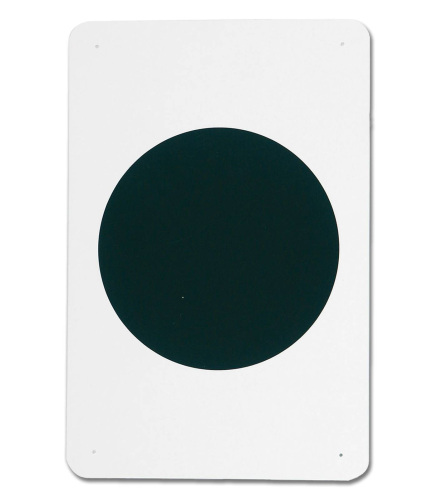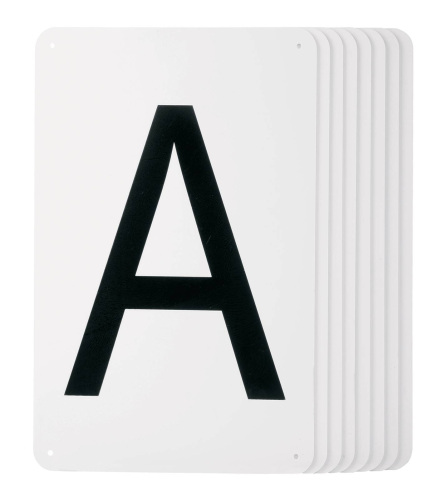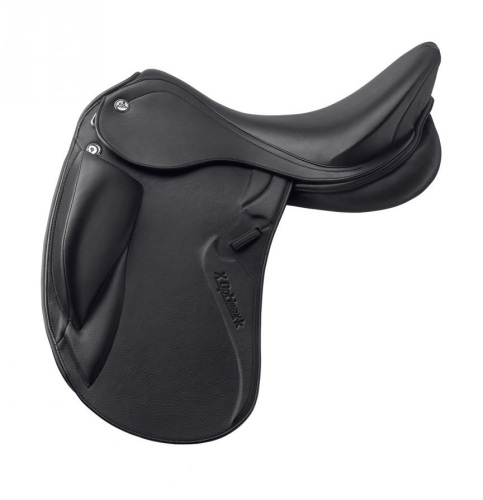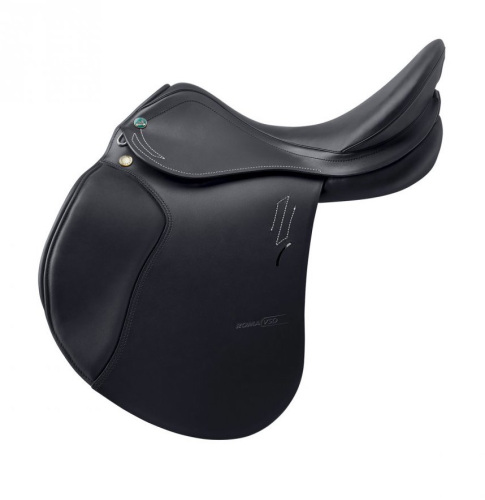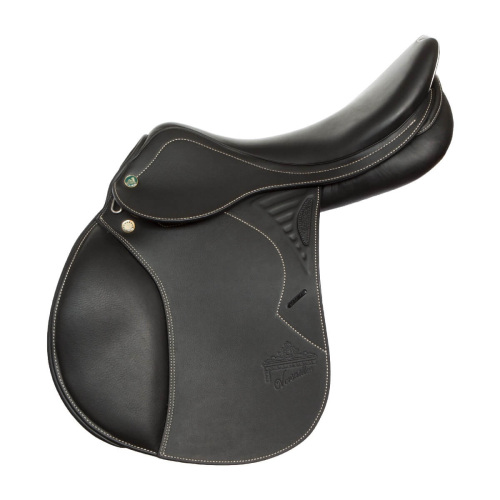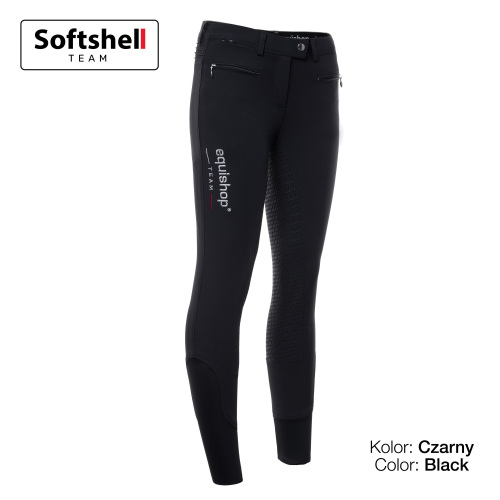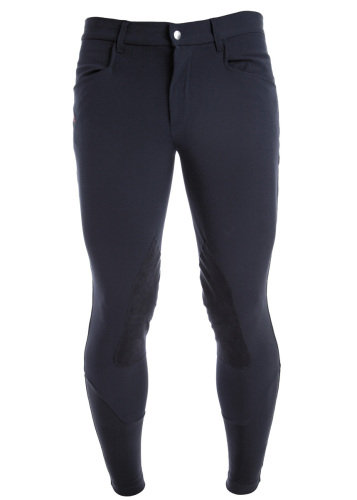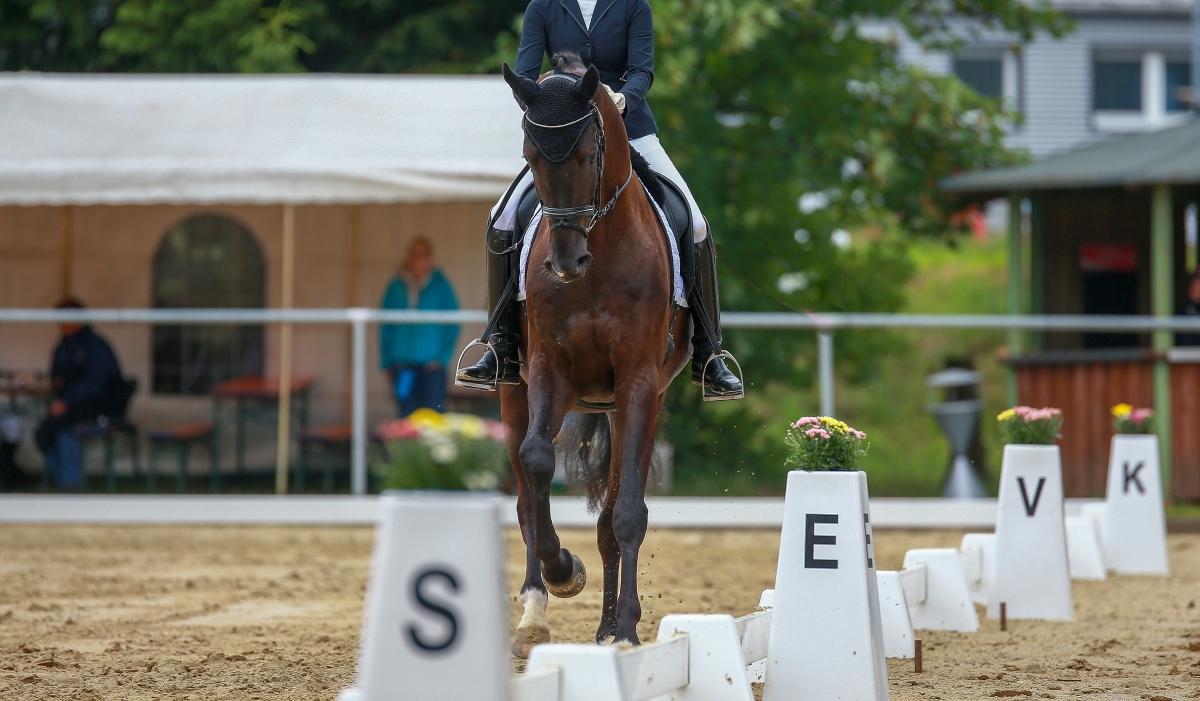
A dressage arena or ring are two terms that might be used to describe a place for a dressage rider and horse to show their moves during a competition. The rectangular area created for dressage pairs has either a grass or sand base that contrasts with the black letters on a white background. Have you ever speculated what those markers mean? Or maybe you wondered about the dimensions of a dressage ring? Don’t fret, we will answer all your burning questions.
The layout of a dressage arena is internationally acclaimed, so the same dimensions and dressage letters can be found during every dressage competition regardless of the class - whether it is a regional competition in Poland or the Olympic Games.
Beginnings
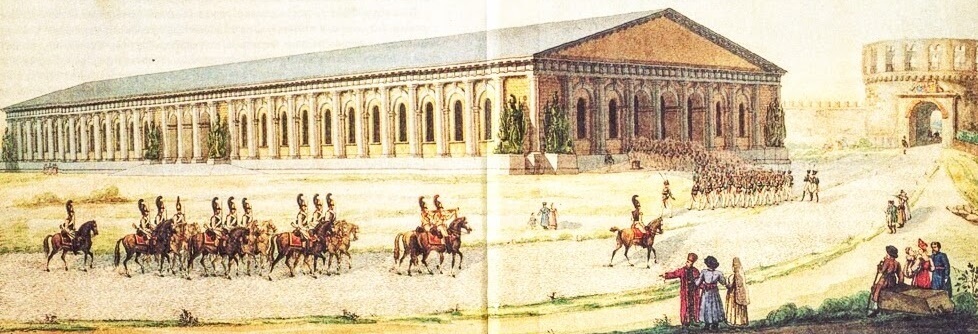
Moscow Ménage, source: www.wikipedia.com
Dressage has its roots in the cavalry, when 1000s of years ago people needed exercises to develop horse’s natural abilities, gain more control over these animals, and have more harmony as riders. The first dressage arenas were created as practice rings for cavalry. The 16th century brought the construction of many famous arenas for dressage riders such as the Spanish Riding School in Vienna, the Hanover Cavalry School, and the Moscow Manège. During that time, there was also a development in classical riding that also required new places for horse training. Despite the fact that dressage has been practiced for centuries, the first official use of dressage arena letters happened in 1932 during the Olympic Games in Los Angeles on a 60x20m arena.
Dressage arena sizes and layout
Watching a dressage riding competition, have you ever wondered how big is a dressage arena? The small dressage arena size is 20m x 40m with 11 arena letters. Their function is to point the rider to where the next movement should take place. Which is the correct order for the dressage letters around a small arena? Starting from the letter that the rider heads towards when entering the arena (A) and following right: A, K, E, H, C, M, B, F. These 8 markers are visible and placed on dressage ring boards. The other 3 markers (G, X, D) are invisible and mark the centre line. This type of layout of dressage arena is used for novice tests as well as for Polish elementary and medium riding tests for equestrian licenses. A standard dressage arena size is 20m x 60m and has 17 dressage letters including 5 invisible ones. This type of arena is used starting from the elementary class. To compare the size and layout of the markers in the small and big dressage ring, take a look at the dressage arena diagram below.
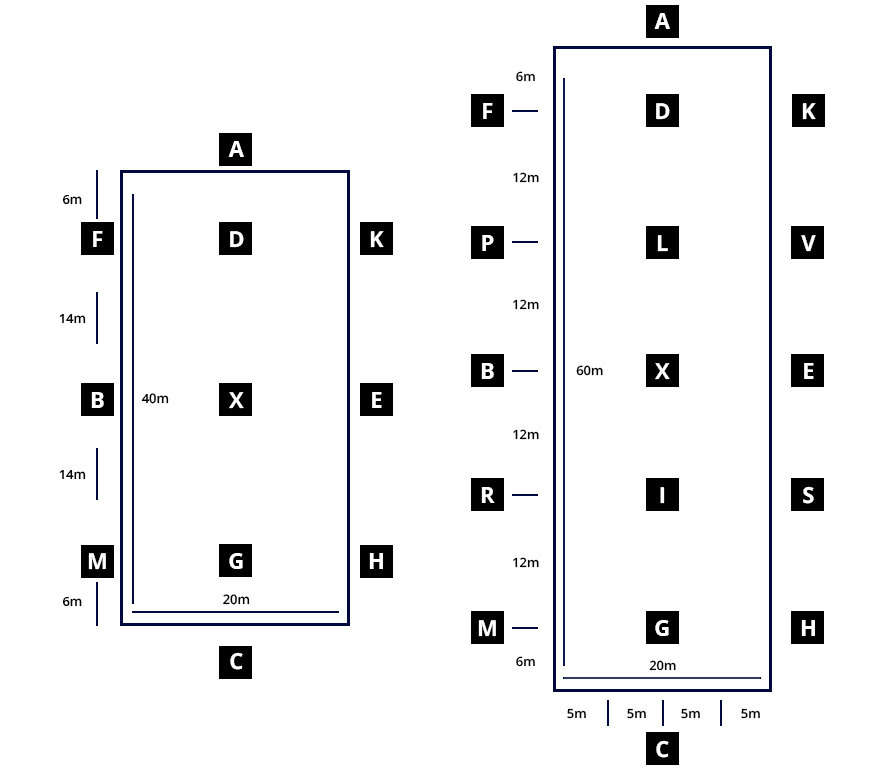 Dressage arena letters diagram
Dressage arena letters diagram
Small arenas are great for inexperienced riders and horses, the exercises performed there are seemingly easy, while the judges want to see a harmonious and light ride. The big arena, which is 60m x 20m, allows riders to perform more advanced and complicated movements. Thanks to the thoughtfully designed arena layout, riders can perform many movement combinations, while the dressage tests are created to show the horse’s capabilities to move beautifully forward, but also a harmonious and precise ride.
History
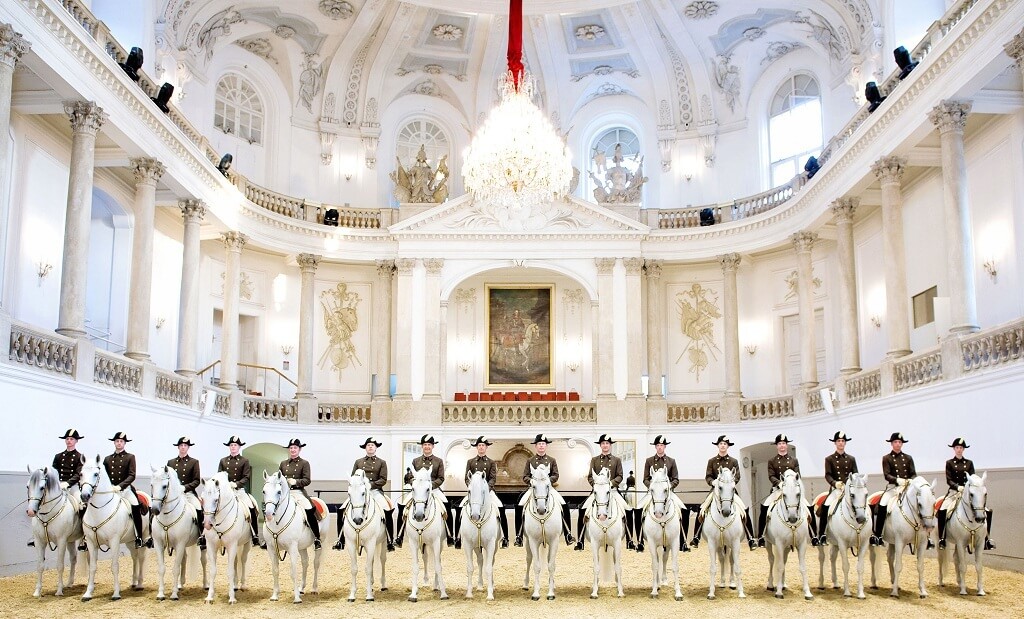
Indoor ménage in Riding School in Vienna, source: www.srs.at
The origins of the riding arena have not been completely discovered, and the history of the dressage ring letters is especially unclear. The baroque manèges from the 16th century were rectangular just like the modern riding arenas. However, they lacked the markers. The mysterious origins of the dressage arena letters have a few stories that explain their creation. Let's discuss the main theories.
The first story says that the letters came from the names of horses. In 17th century England, the first prince of Newcastle – William Cavendish – had a rectangular arena that was surrounded by three stables. The letters supposedly derived from the first letter of names of horses that were stabled in a particular place. The prince was a horse trainer and even published a few of his books on this topic, for example, Méthode et invention nouvelle de dresser les chevaux which translates to “method and new way to train horses.”
However, many other stories point to the origins of the markers to 19th-century Royal Prussia. There, an arena placed in front of the royal stables was tagged with letters. At first, the letters were supposed to help with delivering packages between cities. The couriers and/or riders were assigned to specific markers and gathered in front of them while waiting for further instructions. Later, the arena in front of the royal stables was used for cavalry training but the markers remained.
The dressage arena letters in the 19th century Royal Prussia could have indicated social ranks. The Prussian military organized shows in a standard-sized arena, while the letters marked sitting places of the aristocracy.
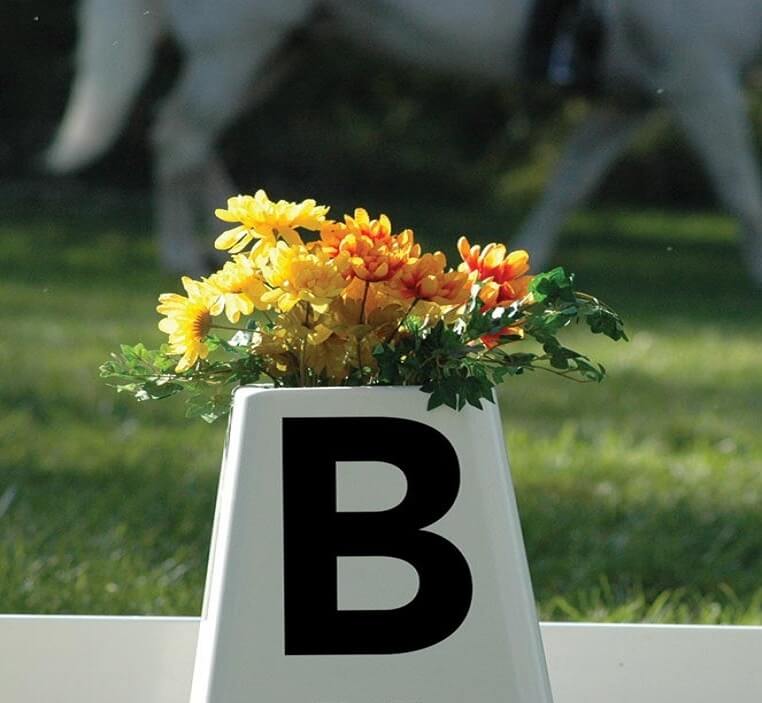
Source: premierequestrian.com
K - Kaiser / King F - Furst / Prince P - Pferdknecht / Stablehand V - Vassal / E - Edeling / Honoured Guest B - Bannertrager / Ensign S - Schzkanzler / Treasurer R - Ritter / Knight M - Meier / Lord H - Hofsmarshall / Lord Chancellor
This tradition supposedly then gave the beginning to the dressage arena layout that was created by 20 Prussian cavalry officers. Different information sources propose a connection between the markers and names of German titles; however, no source explains the origins of A, C, and X markers. Either way, every dressage rider needs to know all the dressage arena letters if they want to become the next Charlotte Dujardin.
It might seem like following the marker order during a dressage competition is easy as well as practicing the test. However, this could not be further from the truth. It turns out that performing a movement, for example, transitions to walk, halts, leg yields, extended paces, or canter perfectly on a marker is extremely difficult, and requires a lot of focus from the rider and the horse.
The dressage ring diagram should be memorized by every dressage rider, even beginners. If that's something you're struggling with, take a look at the list of acronyms often used by dressage riders, which are sure to help you remember the layout of the arena and perform brilliantly at your next training or competition.
For a small arena (20m x 40m):
All King Edward's Horses Can Manage Big Fences
All King Edwards Horses Can Make Big Farts
All King Edwards Horses Carried Many Brave Fighters
A Fat Black Mother Cat Had Eight Kittens
For a big arena (20m x 60m):
All King Victor's Exceptionally Stunning Horses Can Manage Really Big Plastic Fences
All King Victor's Expensive Show Horses Can Make Really Big Pongy Farts
Not everyone is lucky enough to find a stable that offers a standard dressage arena. If that’s the case, how can one practice dressage tests? First and foremost, mount the dressage letters around your riding arena according to the layout (here you can find dressage letters for sale). The dressage arena layout itself doesn’t have to match the standard dimensions for you to practice movement precision and perfect cues. Additionally, many stables organize training that allows the rider to practice a dressage test in a standard arena, frequently paired with professional judge commentary and a possibility to raise riding skills. This kind of training is a great opportunity so if you hear about one being organized near you, don’t hesitate to sign up.




 Moscow Ménage, source: www.wikipedia.com
Moscow Ménage, source: www.wikipedia.com Dressage arena letters diagram
Dressage arena letters diagram Indoor ménage in Riding School in Vienna, source: www.srs.at
Indoor ménage in Riding School in Vienna, source: www.srs.at Source: premierequestrian.com
Source: premierequestrian.com